In Norway, everyone has the right to enjoy nature, irrespective of land ownership. This deep-rooted tradition lets people hike, camp, and forage, while following common-sense rules to respect privacy and land.
Many of us have heard the call of the wild, but how easy is it to answer when you have to worry about “no trespassing” signs or angry landowners? Wouldn’t it be much easier if nature was accessible to all?
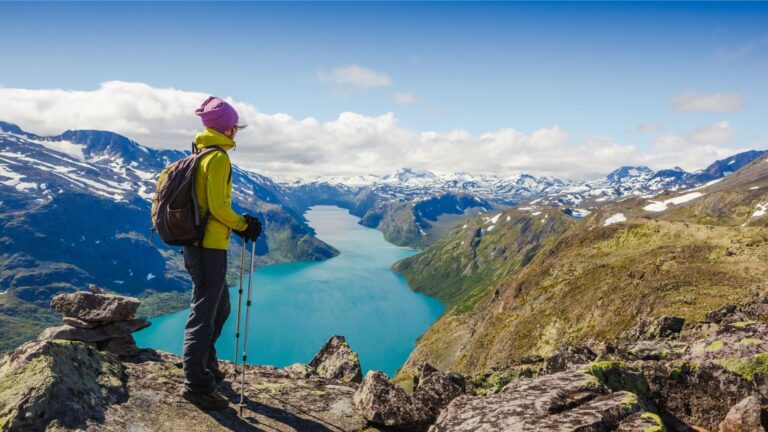
Imagine not needing explicit permission to hike, pick berries or camp under the stars wherever you please. Sounds like an impossible dream? Nah, it’s Norway!
So try to momentarily forget everything you know about land ownership and the rights that come with it. Let’s explore together the very Norwegian concept of “right to roam”, or “allemannsretten”: a foreign but beautiful idea based on freedom, mutual respect and above all a love of nature.
What is allemannsretten
Allemannsretten (the “right to roam”, or “right of public access”) is quite a tongue-twister for native English speakers. But the concept it represents is simple: everyone has the freedom to enjoy nature, regardless of who owns the land.
For a foreigner used to fences and no trespassing sign, the concept seems very odd indeed – almost too good to be true.
But enjoying nature – and hiking from place to place – is so deeply ingrained in the Norwegian cultural DNA that not having the right to roam would be unthinkable. It is a major enabler of friluftsliv, the outdoors lifestyle beloved by Norwegians young and old.
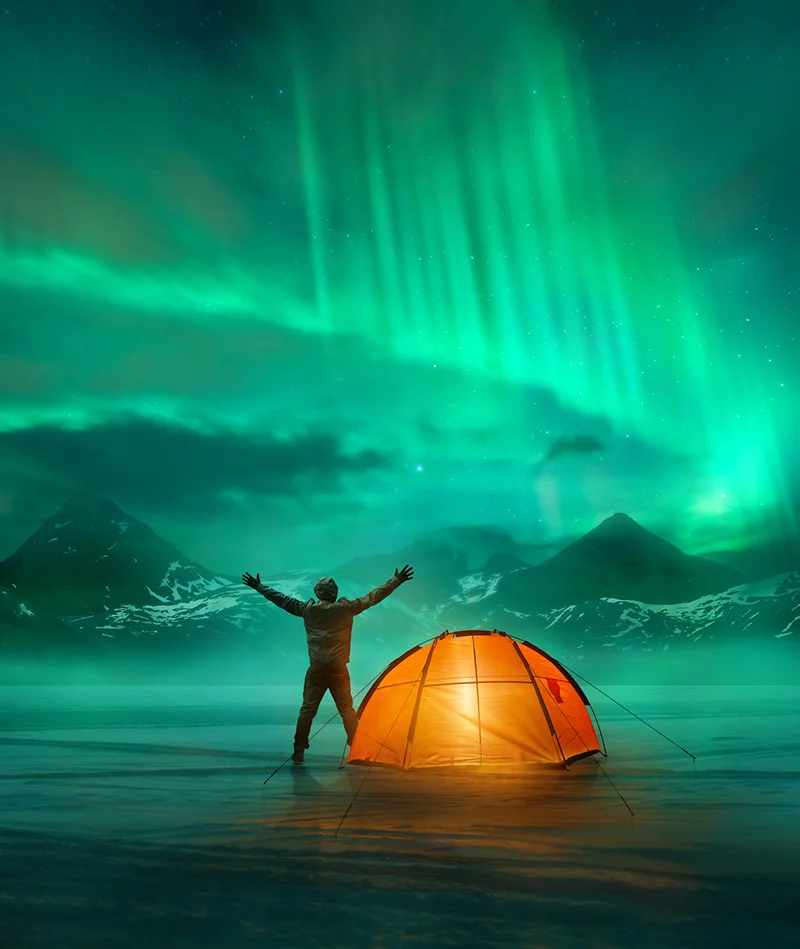
This doesn’t mean that anything goes, though. The right to roam is not a licence to do absolutely anything you please, anywhere you like.
The history of the ‘right to roam'
The Right to roam isn’t some modern fad or a gimmick to boost tourism. It has deep roots in Norway's history.
Before cars came into the picture, there were relatively few roads in Norway. Since most of the communities were located along the coastline, a lot of the transportation was done by boat.
There was, however, an extensive network of paths that were used to travel across the land from town to town. A lot of the hiking trails that are maintained today by DNT (the Norwegian Trekking Association) date from that time.
Trekking and using the land freely for sustenance along the way was just the natural way of things at the time. The modern concept of Allemannsretten, however, solidified in the middle of the 20th century, ensuring every person’s right to access and enjoy nature.
How the ‘right to roam' works in Norway
The right to roam (or right of public access) is defined in the Norwegian Outdoor Recreation Act. It mainly applies to uncultivated land, but movement can also take place on cultivated land to some extent.
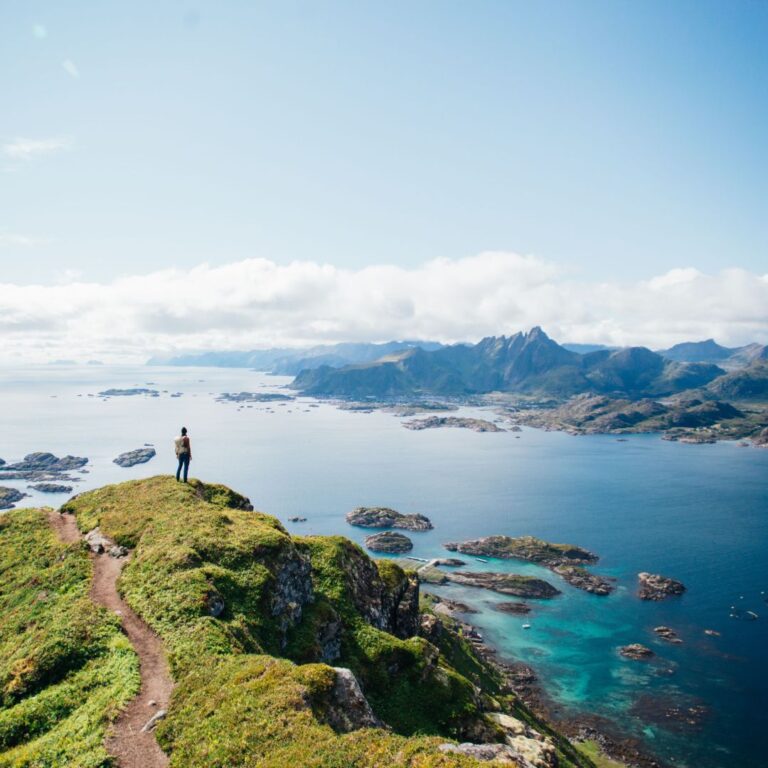
Sounds complicated? It’s really not. Essentially, if land is not cultivated, you can pass through – on foot, on skis, on a bicycle, or even on horseback.
But what if you’re on a motorcycle or snowmobile? For anything with an engine, different rules apply: mostly defined in the Law on Motorised Traffic.
Bear in mind that if rules regarding hiking are quite permissive in Norway, rules regarding motorised traffic are much more stringent. Use of snowmobiles, for example, is much more restricted in Norway than it is in places like the US or Canada.
Electric bikes fall into a grey zone. They technically have an engine, and don’t fall under the right to roam, but in many circumstances they are considered the same as ordinary bicycles.
Gathering resources from the land
Interestingly, the right to roam includes the right to do things like picking berries, mushrooms and nuts. This does not mean you can pick berries on an industrial scale – there are specific rules for that.
Also bear in mind that there are special rules regarding cloudberries (called multer in Norwegian) in Nordland, Troms and Finnmark. These rules limit the picking that is allowed without special permission to whatever you can consume on site.
You can also gather wood to build a campfire, provided that you don’t harm healthy trees. Essentially, feel free to pick up dead sticks but leave healthy vegetation alone. Just be sure you understand any local restrictions on open fires, which often apply in the summer.
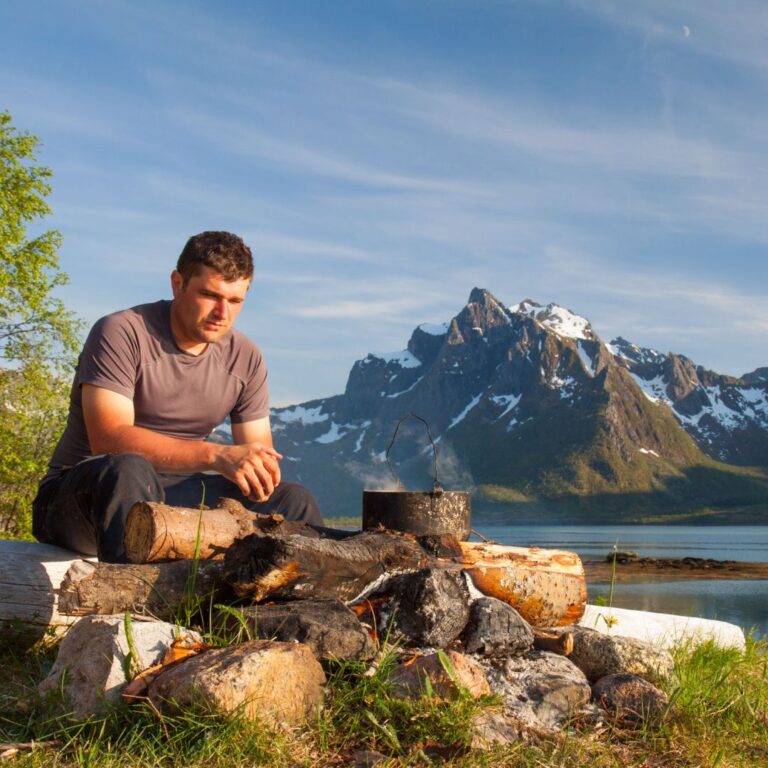
Harvesting shellfish on the shoreline (clamming) is also okay. Of course other laws and regulations must be observed (regarding endangered species, for example).
The limitations of Norway’s ‘right to roam'
The right to roam doesn’t mean anything goes, of course. Luckily, the rules are generally grounded in common sense, so they’re not too difficult to follow.
An example of such a no-nonsense rule is that you have to respect a “zone of privacy” around someone’s house or cabin. You can cross someone’s property when hiking, but you should avoid getting too close to their house.
How close is too close? The law isn’t extremely specific on this, but it does mention a radius of 10 to 20 metres (30 to 60 feet) around someone’s house or cabin, depending on the lay of the land.
Another no-nonsense limitation is that organised events need special permission. For example: you don’t need permission from the land owner to cross their property on skis, but you do if you want to organise a ski race with dozens of participants.
A property owner can’t put up fences just to keep people out, but they can do so “for business reasons”.
The law requires relatively little from the landowner in terms of justification when it comes to these “business reasons” – keeping farm animals in or predators out is one such reason.
Camping with Norway’s ‘right to roam'
Norway’s Right to roam applies to camping. But again, it’s not a free-for-all. As a rule, setting up a tent or a hammock is allowed on uncultivated land. Make sure you’re at least 150 metres (500 feet) from any house or cabin.
Also look for “no camping” signs. Just because the general rule is camping is allowed doesn’t mean there won’t be exceptions.
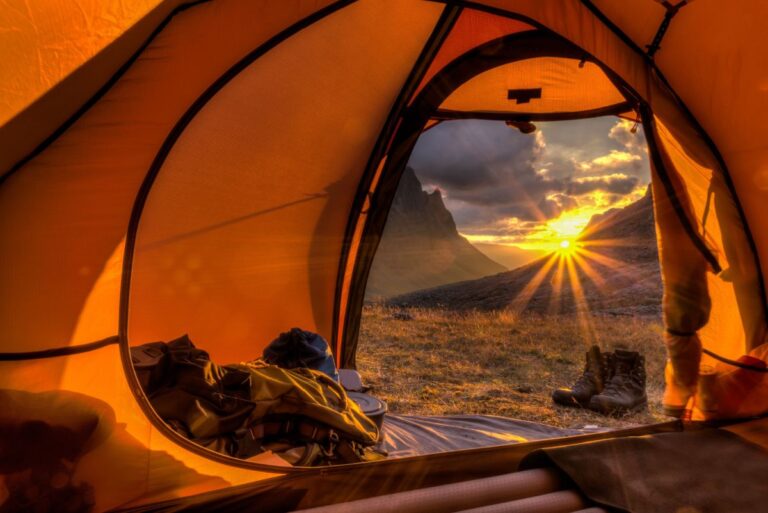
The maximum length of your stay at the same spot is two nights. Leave behind no trace of your passage – bring your trash with you and don’t disturb vegetation, wildlife or farm animals.
In areas that are cultivated (or close to such areas), you need the owner’s permission. See it as an occasion to strike up a conversation.
Camping with an RV
Rules for camping with an RV or motorhome are a bit more restrictive, since the Law on Motorised Traffic applies. Generally speaking, you can park motorhomes or camping trailers on or along private roads unless prohibited by signs.
In uncultivated areas, parking is allowed on public roads as long as it doesn't cause significant damage or inconvenience. As is the case with tents and hammocks, make sure to stay at least 150 metres (500 feet) away from inhabited houses or cabins.
Respect “no camping” signs. Some areas are suffering under the strain of overtourism (the Lofoten archipelago is an example of this) and “no camping” signs are just one way of dealing with the situation and containing the damage caused by large numbers of visitors.
A few golden rules
So you’ve read this article, checked the rules and you’re pretty sure you’re in the clear: You decide to hike across a stretch of private land or pitch your tent in the wilderness. Now here are a few golden rules to follow to ensure there will be no trouble.
- Remember that you’re a guest – The Right to roam allows you to travel on other people’s property, but it still remains other people’s property. Behave like a polite guest.
- Obey signs and don’t hop over fences – Signs and fences are there for a reason. Sure, in some cases they may be against the Right to roam law but that’s not your battle to fight.
- Leave nothing but footprints – Don’t leave trash behind, and take care not to damage the vegetation unnecessarily by sticking to existing roads or paths.
- Be kind to others – Other people also have the right to roam. Share the space and help out in emergencies.
- When in doubt, ask – If you’re not sure what’s allowed or not, ask the local tourist office.
Similar rules in other countries
The Right to roam isn’t exclusively a Norwegian thing. Sweden and Finland have an unwritten customary law that broadly corresponds to Norwegian rules.
In Iceland, the Right of Public Access is included in the Conservation Act. Denmark does not have a Right of Public Access, but there are rules on legal travel on beaches and in uncultivated land.
In England, Wales, and Northern Ireland, ten percent of the land is designated as “open access land” where walkers have free access off the paths, and they also have a continuous network of routes open to the public. In addition, there are numerous ‘commons' owned by farmers or the inhabitants of a village as common property.
Scotland's legislation is closer to the Nordic model. Germany's Conservation Act gives the population the right to free movement on roads in undeveloped areas and forests.
In the USA, rules vary a lot from State to State so describing them would require its own article. However, because American property rights include the right to exclude others, the freedom to roam does not generally exist in the United States.
Have you taken advantage of these rules of public access in Norway? We'd love to hear your experiences in the comments below.


Walking in Kristiansund, I asked a friendly Norwegian if I could go in a certain place. After struggling to speak Norwegian for 5 minutes, he asked in perfect English, “Would it be easier if we spoke in English?” We both had a good laugh. And I continued on the path.
My husband’s family are from Hammerfest and Kirkenes, the far north which I haven’t seen featured in your newsletter yet. He immigrated with his family to the US when he was 5 years old, but spent many summers in Norway. When we are out in the woods, nature, he gets quite agitated when he sees a No Trespassing sign in a remote area with often no buildings in site. Love the allemansretten rule, love to pick wild blueberries and multer in Norway and wish we had more area open here in the US nature. We are mushroom and berry foragers and are able to forage in the public lands in alpine Rocky Mountains fortunately.
What is the land owners liability if someone gets hurt. Say if a farmer leaves the keys in a tractor and someone messed with it.